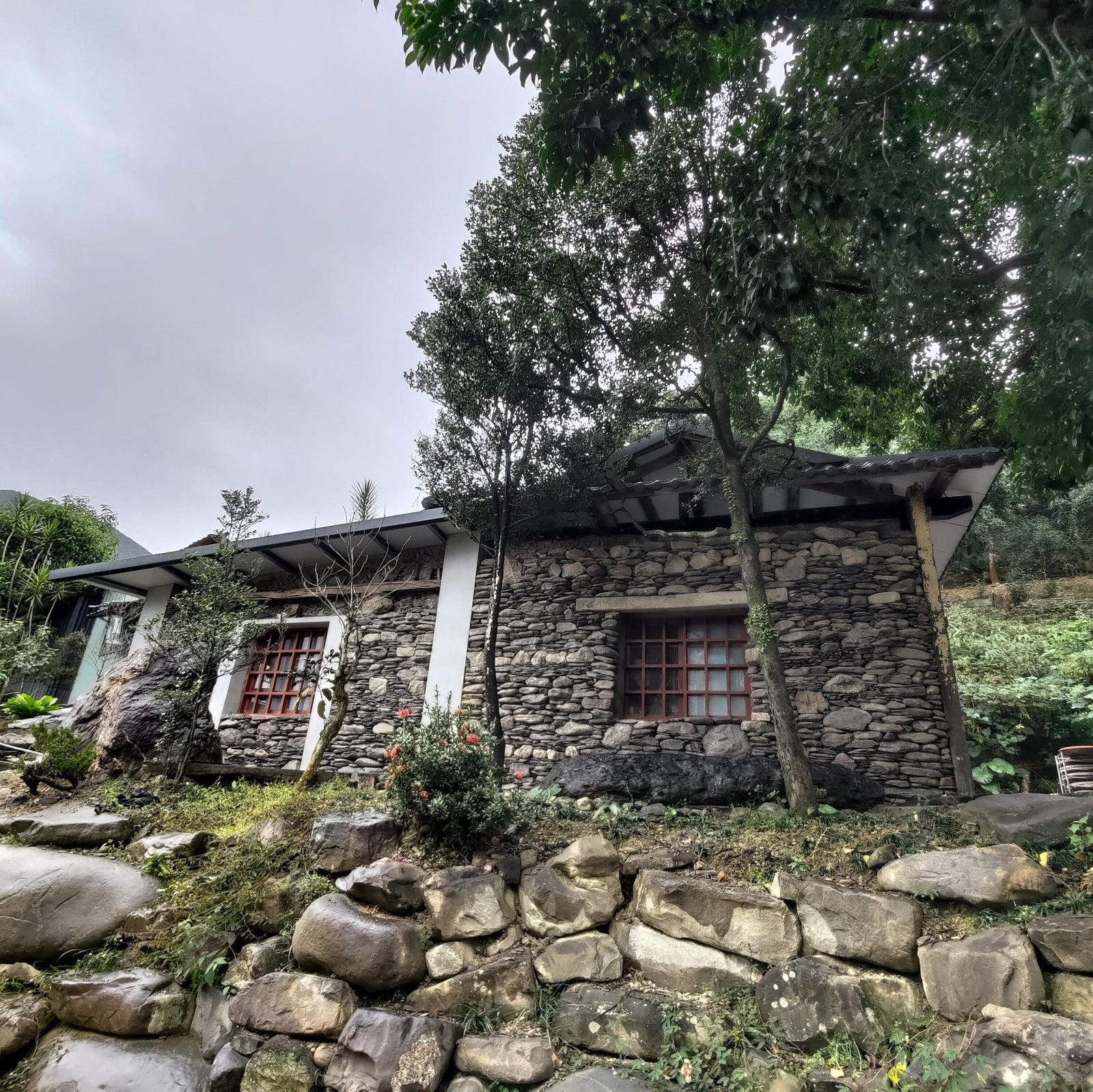Your Cart is Empty
Free Delivery for Over $300 in HK

If I were to write a book about "100 Taiwanese Teas to Drink Before You Die," Guan San Yuan's (觀三元) native wild tea would definitely be included.
Entering through the gate of Guan San Yuan, the first thing you see is a subtly Japanese-style building with walls embedded with distinctive local stones. In a corner of Pingtung, it houses the tea processing room, tea space, and living quarters. They also have a large area designed to mimic the original mountain forest for visitors to better understand Taiwan's wild tea.

"Shui Yan Cha Zhi" is the tea space of Guan San Yuan, managed by the second-generation daughter, Easy Ho. Despite her young age, she is actually a master's student in advanced tea processing technology! Gazing out of the window at the fields and the distant sea of clouds, surrounded by nature while sipping tea, the heart naturally settles into tranquility.
Taiwan native wild tea is different from wild tea. Native wild tea trees are located in national forests at elevations of over a thousand meters, growing for decades, centuries, or even over a thousand years in a manner similar to the original jungle. The tea is only harvested once a year, and every spring, the owner mobilizes a professional team to go into the forest for a month to harvest. Native wild tea trees are tall like regular trees, making the harvesting process extremely challenging.

Owner Mr. Ho originally ran a banquet business and, being a gourmet with high standards for food and a tea enthusiast, he thought he had explored the ceiling of Taiwanese tea over a decade ago, especially with his love for high-mountain tea. However, after trying native wild tea brewed by an indigenous guy, he realized, "There is such a thing in the world." After that experience, he understood his ignorance and arrogance, falling headlong into the business of native wild tea.
When it comes to tea, Mr. Ho is passionate. He spared no expense to obtain approval from the national forest to find excellent tea, even though it involves bidding for national forest land. Tea is categorized by different regions and elevations and made without blending, aiming to showcase the local terroir.

Yet, Mr. Ho is humble when it comes to tea. He once asked, "How do people evaluate a 300-year-old tea tree? Is it good or not? It's not about that... In 300 years, with so many people coming and going, the tea tree has always been there. Instead of evaluating this tea, it's better to say, it's enough. As tea lovers, meeting them is enough." Hearing this brought tears to my eyes. When drinking, facing nature and creation, there should be a sense of awe, shouldn't there?
I experienced a tea session sampling three native wild teas from 2022. Before tasting the first one, I thought it might be an entry-level tea. However, with the primal scent of the forest, like the aroma of high-quality raw Pu'er, even though it became slightly astringent after a few infusions, it was so delicious that I couldn't stop. This strip-shaped tea is called "Red Flower Elder Daughter."

The next two teas were shaped into round balls. When hand-rolling the tea, they found that the native tea leaves had abundant gelatin, making them very sticky. Consequently, they made the tea into round balls. I really liked "Red Flower Round Ball," which had the rare scent of blackberries. The taste was very rich and full, sweet and charming, with depth.
Next was "Green Dragon Round Ball," slightly more skeletal than the Red Flower Child, delicate and refined. We drank each of the three teas for more than seven infusions, and the tea leaves could still be used to be boiled. I remember drinking a cup of boiled tea, with an espresso-like richness, bordering on bitterness, which awakened me suddenly.

The owner was very kind and treated us to taste the 2020 Hidden Dragon series of teas, which were not labeled. The fragrance is so intense in the bag. And the taste? I could only describe it as "unfathomable." The depth was like the roots of the native tea tree, exerting a kind of attraction that pulled my whole heart down. Being able to drink this tea, I felt that life is really worth living. Then the owner told us that this tea costs twelve thousand per catty (a unit of weight in Taiwan, equal to 600 grams)… I sighed in my heart, "I better continue working hard."
Comments will be approved before showing up.